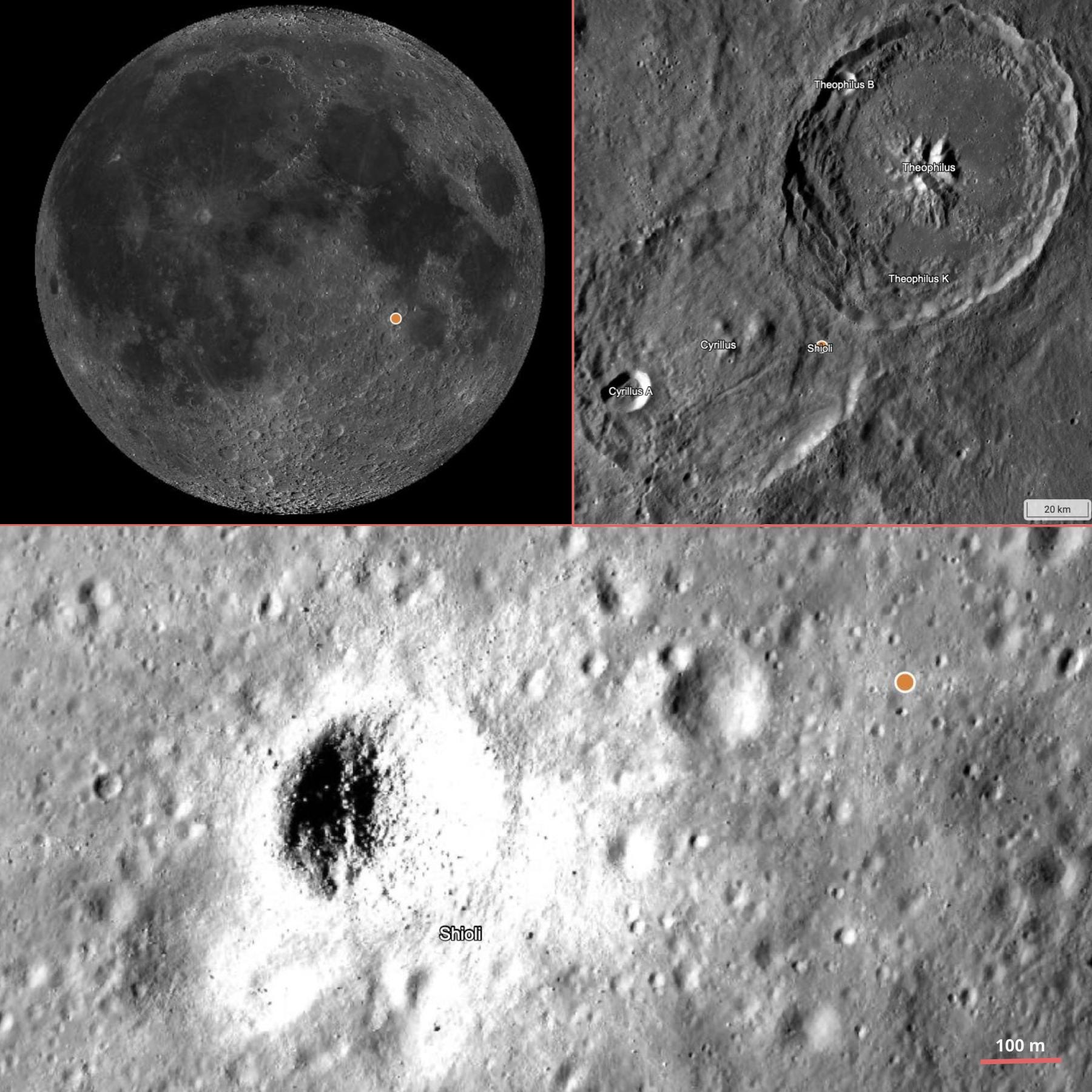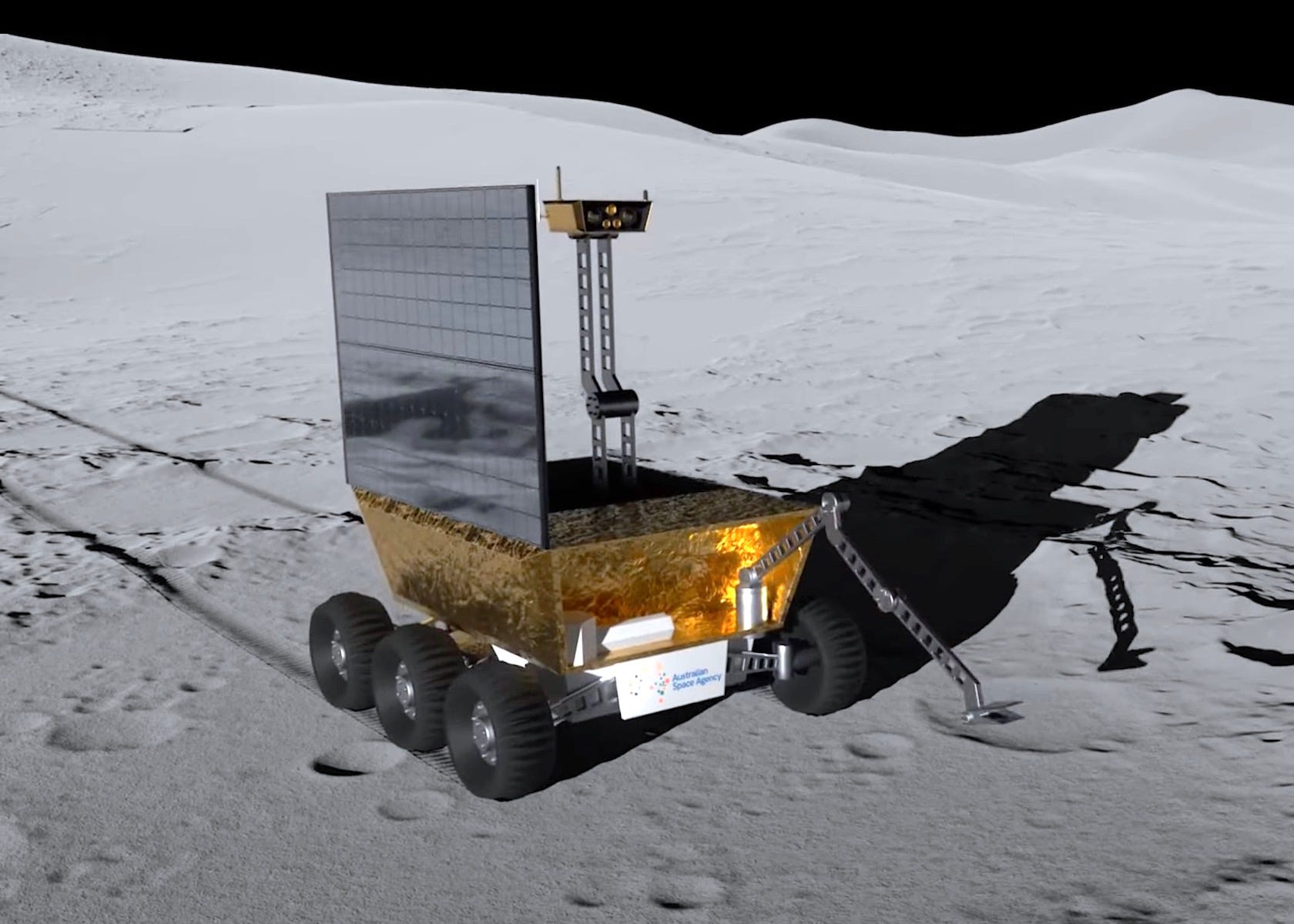Moon Monday #144: On the most precise planetary landing attempt by SLIM, sprawling SLS rocket costs, and more
Japan launches the SLIM lunar lander with an unprecedented aim

On September 7, Japan launched the 2012-proposed SLIM lander to the Moon. Shortly after separating from the upper stage of its H-IIA launch vehicle in Earth orbit, SLIM completed sun acquisition control and JAXA reported its health to be normal. Much like the Advanced Space-led CAPSTONE and South Korea’s KPLO spacecraft, SLIM will take a longer but highly fuel-efficient route to the Moon, only targeting entering into lunar orbit about four months later. SLIM will then spend a month in lunar orbit before attempting its 20-minute descent and lunar landing.
The compact SLIM lander aims to demonstrate pinpoint touchdown, which for lunar landings means achieving a touchdown within 100 meters of the targeted spot. For SLIM, that spot lies on a slope within the rocky ejecta of the 300-meter wide Shioli crater at 25.2°E, 13.3°S. SLIM aims to directly land in this otherwise mobility-inaccessible region and analyze its composition using SLIM’s near-infrared, multi-band spectroscopic camera to glean insights about our Moon’s mantle and its formation.

As a cherry on top, SLIM aims to achieve the daring first of a pinpoint planetary landing with a low spacecraft mass of only 730 kilograms. To that end, SLIM touts a number of novel mass reduction technologies and approaches such as an integrated fuel and oxidizer tank, which doubles as the lander’s structure base, foldable thin-film solar cell sheets, an integrated digital power control unit, and 3D printed parts like those in its five legs.
Lunar landing accuracies compared
To truly appreciate the tight landing ellipse of 100 by 100 meters that SLIM will target a touchdown within, let’s compare it to some other Moon landings:
- Chang’e 3: Landing ellipse size was 6 by 6 kilometers; and it landed 89 meters away from its target point. This makes Chang’e 3’s touchdown the most precise to date, robotic or human.
- Chandrayaan 3: Landing ellipse spanned 4 by 2.5 kilometers, and it touched down ~350 meters away from the target spot.
- Apollo 17: Landing zone was 15 by 5 kilometers, and astronauts landed it ~400 meters away from its center point.
- Mars landers have much larger ellipse sizes. Perseverance, the most precise Mars lander, had an ellipse size of 7.7 by 6.6 kilometers and it landed 1.7 kilometers away from its center. Curiosity’s landing ellipse spanned 20 by 7 kilometers, and missions before it had increasingly larger dispersions.
In other words, SLIM’s mission doesn’t afford it to have any considerable errors beyond the most precise planetary landing to date. Such gripping precision isn’t for the sake of a demonstration. The upcoming US Artemis crewed missions, China’s Chang’e robotic craft, and the majority of other government as well as private endeavors plan to explore the Moon’s rocky south pole, where such demanding touchdowns would be indispensable in order to access the water ice lying inside permanently shadowed regions.

For its next Moon mission launching before the end of decade, Japan is partnering with India to have its LUPEX rover directly study the nature, abundance, and accessibility of water ice at the lunar south pole at 89°S. The lander delivering LUPEX will be built by ISRO, and Chandrayaan 3’s success as well as hopefully that of SLIM will feed into the lander’s ability to safely touchdown amid unforgiving polar terrain. The Japanese government has already approved the LUPEX mission but India is yet to, and so that will be the green light to look out for next now that Chandrayaan 3 is successful.
Many thanks to Epsilon3, Open Lunar Foundation and Arun Raghavan for sponsoring this week’s Moon Monday.
The SLS rocket remains a critical cost concern for Artemis Moon missions
In a scathing report published on September 7 and delivered to the US House and Senate appropriators, NASA’s Government Accountability Office (GAO) has criticized the agency for continuing to be not transparent enough about the true cost of the SLS rocket central to the nearly $100 billion Artemis Moon program. NASA’s Office of Inspector General (OIG) had estimated in 2021 that separately from development costs, the first three SLS flights will cost $2.2 billion per launch. And now the GAO notes seeing cost growth even as the SLS moves into production:
Based on our analysis of the contract, the cost to produce successive core stages is increasing over time.
This report follows the OIG’s May 25 report, which criticized the agency’s handling of the SLS rocket engine contracts to Aerojet Rocketdyne and Northrop Grumman who provide the vehicle’s $146 million-per-piece RS-25 core engines and the twin boosters respectively. The OIG had noted a $6 billion cost increase and a delay of more than six years in receiving said hardware for the designated initial Artemis missions. The report added:
NASA and its contracts will continue to exceed planned cost and schedule, resulting in a reduced availability of funds, delayed launches, and the erosion of the public’s trust in the agency’s ability to responsibly spend taxpayer money and meet mission goals and objectives—including returning humans safely to the Moon.
The latest GAO report says related NASA officials acknowledge that the SLS is “unsustainable” at its current level, and that they’re trying to find short-term as well as long-term cost reduction strategies. To that end, NASA is preparing to award a contract for future SLS rocket launches to Deep Space Transport LLC, a joint venture between two major SLS contractors Boeing and Northrop Grumman. In hopes to reduce SLS’s cost by up to 50%, NASA will transfer the ownership of its production and associated facilities into a single launch service contract. The baseline contract would be for Artemis V–IX missions, and likely extend to Artemis X–XIV later.
More Moon

- The Australian Space Agency is running a competition for Australians to name the country’s first lunar rover heading to the Moon’s south pole in 2026. Earlier this year, the agency announced competitively selecting two national industry consortia—AROSE and EPE & Lunar Outpost Oceania—to build rover prototypes by June 2024 for $4 million each. The winning consortium will build the actual semi-autonomous rover for lunar delivery on a NASA-funded CLPS lander. The rover will retrieve lunar soil for the lander, where a NASA-operated system will practice extracting oxygen from it as a technology precursor to eventually sustaining longer human presence on the Moon.
- Following a recent agreement, South Africa has now formally joined the upcoming China-led long-term scientific base on the Moon’s south pole called the International Lunar Research Station (ILRS). It isn’t clear what South Africa’s role would be but a ground station is a good guess, something the country’s space agency is providing to NASA as well for high bandwidth communications during Artemis crewed missions. Relatedly, Venezuela formally joined ILRS on July 17 with ground station infrastructure being its key contribution.
- It happens to be great timing that following Chandrayaan 3’s hop on the Moon, Astrobotic has started work on two NASA-funded studies to better understand how lunar lander rocket plumes affect lunar soil. The aim is to quantify risks posed by lander plumes to various kinds of nearby lunar hardware and future habitats with high fidelity terrestrial testing. A White Paper submitted to the 2023-2032 US Decadal Survey strongly recommended future NASA Moon missions to carry instruments for specific measurements of plume effects, and that such data be public.
- The team behind the radar onboard the Chandrayaan 2 orbiter decided they didn’t want out on the action and have also imaged the Chandrayaan 3 lander on the Moon, following snaps by the orbiter’s optical high-resolution camera and NASA’s Lunar Reconnaissance Orbiter.
